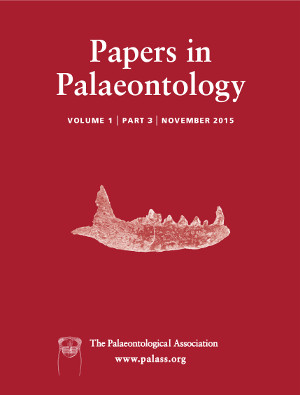Reg. Charity No. 1168330

The common ostracod genus Echinocythereis has a worldwide and eurybathic distribution, but in Recent sediments, it is more common in cold waters. Its oldest record, dating from the Cretaceous, indicates that the genus should be very useful in stratigraphical and palaeoecological studies, but the taxonomy of Echinocythereis is very complex and includes misinterpretations and misidentifications. Here, we provide an overview of the geographical and stratigraphical distribution of Echinocythereis and clarify the taxonomic status of its type species, Echinocythereis garretti (Howe and McGuirt in Howe et al., 1935) which (contrary to other authors) we consider to be a valid species. Finally, we revise the geographical and stratigraphical distributions and the taxonomy of one ‘species complex’, which is very common and abundant in the North Atlantic, and has also been recorded from the Pacific and Southern oceans. This species complex has been interpreted as a single species in virtually all publications on North Atlantic ostracods, where Echinocythereis has been identified. The complex includes Echinocythereis echinata (Sars, 1866), Echinocythereis irpex (Brady, 1880) and, the new species described herein, Echinocythereis jorunbrix sp. nov. To aid in subsequent fast and accurate identification of living specimens, we also provide three mitochondrial COI gene fragments of the new species, which represent the first barcodes for the entire Trachyleberididae family. Our study of both shell and soft parts of these three very similar Echinocythereis species indicates that fine details of the shell have a strong phylogenetic signal, but that these can only be properly understood through very careful study of comparative material and with the aid of high magnification microscopy, such as SEM.